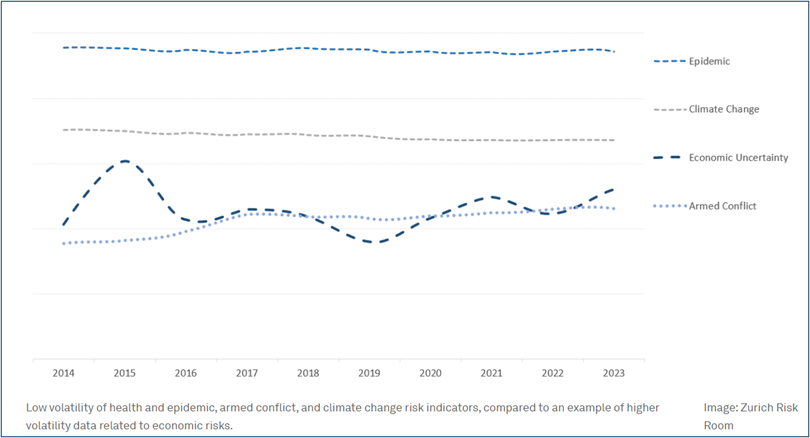While extreme weather like intense storms, heatwaves, and cold snaps is inherently rare, the evolution of climate change is altering the range and intensity of weather conditions, including extremes.
With businesses around the globe looking at these changing weather patterns, integrating sustainability practices into their operations is becoming crucial to adapt and mitigate the impacts of climate change. Understanding and leveraging weather data has become essential for developing resilient, eco-friendly strategies.
Accurate weather information can drive sustainable initiatives across various sectors, from agriculture and renewable energy to urban planning and disaster preparedness. By harnessing the power of weather data, businesses can make informed decisions that not only protect our planet but also promote economic efficiency and social well-being.
Agricultural Efficiency
70% – 90% of agricultural production loss can be attributed to adverse weather, according to researchers at HKUST.
Farmers rely heavily on weather data to optimize planting schedules, irrigation, and harvest times. By integrating predictive weather analytics, agricultural operations can reduce water usage, minimize crop failure risks, and enhance yield quality. This not only conserves natural resources but also supports food security globally. For instance, the use of precision agriculture, which incorporates weather data, has shown significant reductions in water and fertilizer usage while increasing crop yields.
“Precision agriculture” is one of the most significant trends in farming today. According to the Environmental Defense Fund, precision agriculture can reduce water use by up to 20% and nitrogen fertilizer use by up to 30%. Using GPS or georeferencing, precision agriculture guides tractors and equipment to prevent overlaps or misses with seed, fertilizer, and pest control, while limiting wheel traffic to specific tracks to avoid soil compaction. It also allows for variable delivery of these inputs based on spatial data from satellite or drone imagery and yield data from previous harvests.
Renewable Energy Optimization
Renewable energy sources like solar and wind are inherently dependent on weather conditions. Accurate and timely weather forecasts enable better integration of these energy sources into the grid, ensuring a stable and efficient supply. Wind farms use weather data to predict wind patterns, thereby optimizing turbine performance and maintenance schedules. The National Renewable Energy Laboratory (NREL) highlights that improved weather forecasting can increase wind power production by 10% and reduce operational costs by 20%.
For example, thanks to a $1.7 million Solar Energy Technologies Office (SETO) award, the National Renewable Energy Laboratory (NREL) and Maxar have developed advanced data-driven probabilistic forecasting techniques that significantly improve the accuracy of solar power generation forecasts. Utilizing state-of-the-art predictive modeling and a comprehensive understanding of power systems and markets, these forecasts can predict solar energy production across various time frames, from minutes to weeks ahead.
But it all comes at a cost, to electrify everything from vehicles to heating systems to stovetops, the U.S. grid must expand by about 57% and get more flexible, too; according to the NREL. Solar and wind energy are poised to lead the future clean energy grid.
Climate Resilience and Disaster Preparedness
A KPMG study found that 92% of Canadian business leaders fear last year’s extreme weather events signal a new normal, with concerns about climate-related incidents this year. The survey of 350 leaders revealed 56% of companies saw profitability decline and 49% faced increased costs from productivity losses, supply chain disruptions, and higher insurance premiums.
Cities are increasingly integrating weather and climate data into urban planning to build resilience against extreme weather events. This includes designing buildings and infrastructure that can withstand severe weather conditions, implementing green spaces to manage flood risks, and planning emergency response strategies. The Rockefeller Foundation’s 100 Resilient Cities initiative emphasized the importance of using climate data to create urban environments that can adapt to and recover from natural disasters and it still holds true today.
Businesses are recognizing the importance of weather data in ensuring operational continuity during extreme weather events. By understanding potential weather impacts, companies can develop robust risk management plans, safeguard supply chains, and protect assets, thereby maintaining their sustainability goals. The World Economic Forum recently stated that we should be focusing even more acutely on understanding the complex link between climate change and the chaotic severe weather systems, like tropical cyclones, convective hailstorms, and the influence of multi-decadal systems like the El Niño Southern Oscillation.

Harnessing the power of weather data is essential for advancing sustainability efforts across various sectors. From optimizing agricultural practices to enhancing renewable energy integration and improving urban resilience, accurate weather information is a cornerstone of environmental responsibility. As we continue to face the challenges of climate change, leveraging climate data will be vital in building a sustainable and resilient future.
Companies impacted by weather should create comprehensive long-term solutions to address and mitigate the effects of heightened physical risks. Weather Source is already there, our Current and Future Climate Natural Hazard Risk solutions were developed specifically for businesses to help them prepare for and mitigate risk. Talk to us about how this can benefit your business and how to get started.
If you are in the Bentonville, AR area, join us on August 13 for our event with Seek Insights “Disaster Response to Emergency Prep” on August 13. We’ll be revealing our new Extreme Weather Impact Analysis App, in Seek’s Insight Cloud. The app is designed to help businesses transform disaster recovery into proactive emergency preparation, ensuring your business is always ready for extreme weather events.



